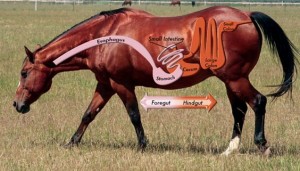Cyclone Preperations
 In South East Queensland and far north NT Cyclones are on the way.
In South East Queensland and far north NT Cyclones are on the way.
Here is some general information that may help you prepare your animals. Ref: Animal Welfare NT, Australian Horse Rescue
Cyclone preparation for your pets
Cyclones can be a frightening and dangerous event not only for humans but also for pets. A well thought out plan can help reduce the risks and ensure the safety of both pets and owners.
Keep your pets safe in a cyclone ![]() 145 KB
145 KB
To stay or go – pets
Staying home
If you decide to stay at home with your pets, bring the animals inside and keep them in a secure room where they are safe and comfortable with an adequate supply of food, water, toilet litter tray or newspapers and bedding.
Going to a shelter
A number of undercover car parks have been designated as places where residents can shelter in their cars with their pets, provided the pets are properly restrained.
Leaving pets behind
Pets should only be left at home when it is absolutely impossible to move them in advance or when you cannot take them to a shelter. Pets left at home during a cyclone should not be tied up. In a flood, pets should have shelter on higher ground with an escape route in case water levels rise.
To stay or go – horses
Leaving your horse in its usual location
If the stable is well constructed, the horse should be left and the tack shed and surrounding area well secured, with loose objects stored or tied down. If the horse is being paddocked, the fences should be in good repair. Large areas with opening adjoining gates to paddocks can provide the horse with the opportunity to get into a fast gallop, where it could panic and go through or into a smaller fence. Horses are herding animals so it is recommended they are contained and not separated or isolated. Putting a light rug, paddock boots and bell boots on the horse may offer some protection. Whether the horse is being stabled or paddocked it should be left with adequate drinking water.
Relocating your horse
Horse owners should assess whether the horse’s environment will be adequate to ensure its safety during the disaster and for a minimum of three days after. The decision to relocate the horse must be made early, as a late evacuation could increase the chance of injury or death.
The risks to be considered in the event of a cyclone include:
- location and accessibility of the property
- condition and placement of the stable, yards and fences
- amount of available resources to combat a cyclone or flood.
A horse’s training also needs to be considered well in advance of a disaster, particularly if the horse is hard to catch or difficult to load. Training the horse as the disaster is approaching could prove to be difficult or even fatal.
The Australian Veterinary Association – Click here to read their article “What can I do to help protect my horses and livestock during cyclones and flooding?”
In this article the AVA provides information on preparing and implementing a disaster plan, what to do after the storm, and the following very useful ways of identifying your animals:
- “Neck band with name and phone number
- Microchip
- Halter tag (on a halter that will break easily, not rope)
- Luggage tag braided into the mane or tail
- Clipper-shaved information in the animal’s hair
- Livestock marker or spray paint
- Permanent marker on hoof wall”
General tips for equine emergency plans:
- Be ready well in advance so you are not trying to move horses, etc, in dangerous circumstances
- Think carefully about the safest place for horses to be located
- Have cars, floats, trucks in good working order for safe evacuations
- Check that your first aid kit stocked up
- Have phone numbers on hand for all horse vets in your region in case your usual vet is busy
- Have your mobile phone battery charged
Pack your emergency pet pack
Emergency pet pack
An emergency pet pack should contain:
- food and water for a minimum of three days
- food and water bowls
- collar and lead
- blankets, towels and bedding
- pet first aid items and essential medicines
- pet medical history and veterinary contacts.
All animals should have identification and contact phone numbers attached securely to their collars.
Emergency horse pack
An emergency horse pack should contain:
- food and water for a minimum three days
- feed buckets
- blankets and towels
- extra lead rope and halter
- wire cutters
- torch, portable radio and fresh batteries
- equine first aid items.
The horse should have detailed identification and if the horse is branded, registered or micro-chipped, the information should be kept with the emergency pack. Other methods of identification include painting the owner’s name and phone number on the horse with livestock grease crayons or painting it on their hooves as mentioned above.


